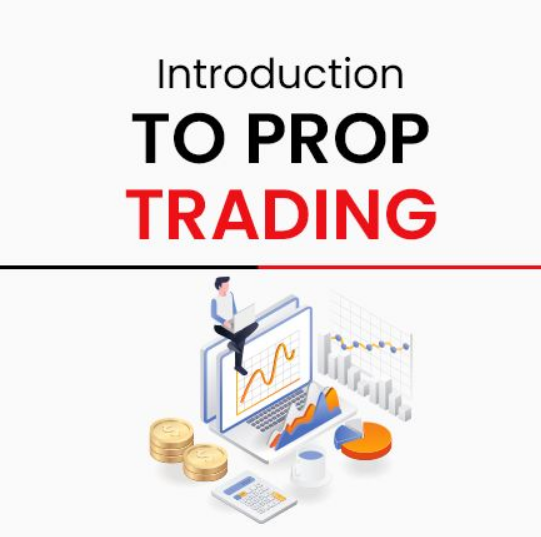Proven Prop Trading YouTube Channels & Strategies
In the rapidly evolving world of prop trading, staying ahead of the curve requires more than just intuition—it demands continuous education, real-time insights, and state-of-the-art backtesting tools. In this blog post, we explore some of the most influential prop trading YouTube channels, alongside expert insights on advanced backtesting, risk management, and practical case studies from leading prop firms.
Understanding Prop Trading and the Role of YouTube Channels
Prop trading involves utilizing a firm’s capital to trade financial instruments, with profits and losses shared between the firm and the traders. In recent years, YouTube has become an indispensable resource for traders at every level: from beginners to advanced quants. These channels offer live trading sessions, deep-dive tutorials, and critical reviews on backtesting tools essential for today’s competitive market.
Why YouTube is a Game-Changer for Prop Trading Education
The visual and interactive nature of YouTube makes it ideal for conveying complex trading strategies and real-time market analyses. Whether you’re exploring channels that provide step-by-step prop trading tutorials or live trading sessions that give insights into managing risk during volatile markets, the platform is a treasure trove of actionable content.
Figure 1: Screenshot of a prop trading YouTube channel demonstrating live trading sessions and backtesting analytics.
Advanced Backtesting: A Crucial Component of Prop Trading Strategy
Mastering backtesting is vital for any prop trading professional. Automated backtesting tools enable traders and prop firms to simulate market conditions, optimize strategy parameters, and prevent common pitfalls such as data snooping and overfitting. In this section, we break down advanced backtesting concepts that every trader should know.
Key Backtesting Pitfalls and Mitigation Strategies
Overfitting: Crafting a model that is overly optimized to historical data can mislead strategy performance. Use walk-forward optimization to validate model robustness.
Survivorship Bias: Ensure that the dataset encompasses all active and failed securities to avoid skewed results.
Look-Ahead Bias: Validate the timing of data to ensure that trading decisions are based only on information available at the moment of execution.
Walk-Forward Analysis vs. Traditional Backtesting
Walk-forward analysis divides historical data into training and validation segments, helping traders refine their strategies dynamically. This approach contrasts with traditional backtesting, which may fail to account for market changes and emergent trends. Integrating out-of-sample testing further enhances the reliability of your trading strategy before moving to live deployment.
Comparative Analysis of Top Backtesting Tools for Prop Trading
Choosing the right tool is a pivotal part of any prop trading strategy. Here, we detail comparisons among some widely used platforms:
| Tool | Backtesting Features | Data Quality & Coverage | Integration Capabilities | Pricing & Use Cases |
|---|---|---|---|---|
| TradingView | Event-driven, script-based strategy testing; supports Pine Script automation | Robust historical data across multiple asset classes | API integration with brokers; highly compatible with social trading | Free and premium tiers; suitable for both individual traders and prop firms |
| MetaTrader 5 | Supports multi-currency backtesting; handles commission and slippage | Comprehensive worldwide data especially for forex | Broker integration and expert advisors for automation | Widely used in retail and prop firms, affordable with demo trial options |
| NinjaTrader | Advanced charting and strategy optimization; real-time backtesting | High-quality historical and live data feeds | Extensive API for third-party integrations | Tiered pricing; industry standard for professional traders |
| Backtrader | Open source algorithmic backtesting framework; supports scripting in Python | Flexible data handling with integration of custom datasets | Ideal for automated strategy development; integrates with Interactive Brokers | Free, with community support; favored by quantitative prop trading teams |
Case Studies: Real-World Applications of Advanced Backtesting
To illustrate practical applications, consider the following case study from an established prop firm:
Case Study: Boosting Sharpe Ratio Through Walk-Forward Optimization
A mid-sized prop firm was facing challenges with strategy overfitting, resulting in inconsistent performance and high drawdowns. By integrating NinjaTrader for advanced backtesting and deploying walk-forward optimization, they were able to:
- Refine their entry and exit signals using real-time data and historical performance.
- Reduce maximum drawdown by 30% and consistently improve their Sharpe ratio by over 25%.
- Accelerate the iteration cycle for strategy testing from weeks to days.
Such case studies highlight the importance of incorporating advanced backtesting methodologies to adapt to dynamic market conditions and minimize risk. For more detailed analysis, read our comprehensive guide on prop trading risk management.
Figure 2: Advanced backtesting report screenshot illustrating key performance metrics like drawdown and Sharpe ratios.
Integrating Automated Strategies with Forward Testing
Successful prop trading strategies do not end at backtesting. Integrating forward testing, sometimes referred to as paper trading, ensures that strategies perform under live market conditions. Key metrics to monitor during forward testing include:
- Profit Factor: Aim for values consistently above 1.5.
- Maximum Drawdown: Keep drawdowns within acceptable risk limits set by your firm.
- Execution Speed: Ensure that order execution is optimized for both latency and price slippage.
This holistic approach—combining automated backtesting with disciplined forward testing—helps traders refine their strategies continuously, reducing unforeseen risks during live trading sessions.
Tools & Techniques: Code Snippets and Practical Implementations
Below is an illustrative Python snippet using the Backtrader framework, designed to automate a simple moving average crossover strategy:
import backtrader as bt
class SmaCrossStrategy(bt.Strategy):
params = (('fast', 10), ('slow', 30),)
def __init__(self):
self.fast_sma = bt.indicators.SimpleMovingAverage(self.data.close, period=self.params.fast)
self.slow_sma = bt.indicators.SimpleMovingAverage(self.data.close, period=self.params.slow)
def next(self):
if self.fast_sma[0] > self.slow_sma[0] and self.fast_sma[-1] <= self.slow_sma[-1]:
self.buy()
elif self.fast_sma[0] < self.slow_sma[0] and self.fast_sma[-1] >= self.slow_sma[-1]:
self.sell()
cerebro = bt.Cerebro()
# Add data and strategy here
cerebro.addstrategy(SmaCrossStrategy)
# Run backtesting
results = cerebro.run()
Guidelines for Risk Management in Prop Trading
Effective risk management is paramount in prop trading. Some key industry benchmarks include:
- Sharpe Ratio: Aim for a ratio of at least 1.5 to indicate efficient risk-adjusted returns.
- Profit Factor: Maintain a ratio above 1.5 for a sustainable trading edge.
- Max Drawdown: Set firm-specific drawdown limits to mitigate catastrophic losses.
For a downloadable Risk Management Checklist that outlines these benchmarks and more, see our detailed resource available on our website.
Next Steps: Enhancing Your Prop Trading Strategy
Whether you are a junior trader or a seasoned quant, the insights and strategies discussed here offer actionable steps to enhance your prop trading approach. We recommend:
- Exploring our advanced prop trading strategies to deepen your understanding of backtesting and risk management.
- Subscribing to our newsletter for the latest updates and expert advice on integrating automated tools into your workflow.
With new regulatory frameworks such as MiFID II and evolving market dynamics, continuous learning and adaptability remain key. As of October 2023, staying updated on these trends will ensure your competitive edge in the prop trading space.
Conclusion
This comprehensive guide has examined the role of YouTube channels in prop trading education, delved into advanced backtesting methodologies, compared essential tools like TradingView, MetaTrader 5, NinjaTrader, and Backtrader, and presented actionable case studies. By embracing these insights and leveraging industry-leading tools, both individual traders and prop firms can refine their strategies, manage risk more effectively, and ultimately drive improved trading performance.
Call to Action: Ready to take your prop trading to the next level? Download our Risk Management Checklist and subscribe to our updates for weekly expert insights!





